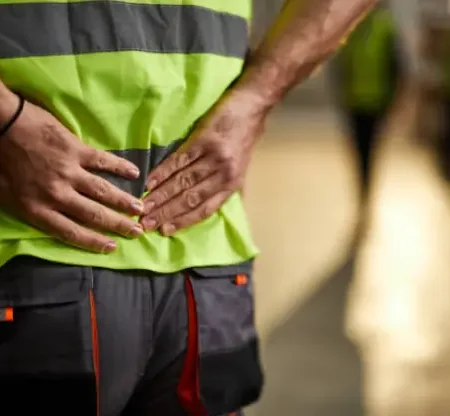If you’ve ever slipped and fallen in a Publix store, you know how painful and frustrating the experience can be. Not only are you dealing with the physical pain of your injury, but you might also be facing medical bills, lost wages, and emotional distress. In such situations, you might be thinking about suing Publix for injury. While the idea of pursuing legal action can be overwhelming, understanding the process can help you make informed decisions. Let’s walk through the legal process of suing Publix for a slip-and-fall injury, from gathering evidence to filing a lawsuit, so you know what to expect.
What Does it Mean to Sue Publix for a Slip and Fall Injury?
Before diving into the legal details, let’s clarify what it means to sue Publix for a slip-and-fall injury. A slip-and-fall injury typically occurs when a person slips, trips, or falls due to hazardous conditions on the property, such as wet floors, uneven surfaces, or objects left in walkways. If the injury happened in a Publix store, and it was caused by their negligence, you might be eligible for compensation. Negligence refers to the failure of Publix to maintain a safe environment for shoppers.
Step 1: Seek Medical Attention First
After a slip-and-fall injury, your health should be your top priority. Even if you don’t feel severely hurt right away, some injuries may worsen over time. It’s important to get checked by a medical professional to document your injuries. This not only ensures your well-being, but it also provides critical evidence for your case later on.
Step 2: Document Everything
Once your immediate health concerns are taken care of, start gathering as much evidence as you can. When it comes to suing Publix for injury, documentation is key. Here are a few things you’ll want to record:
Photos of the Scene: If possible, take pictures of the area where the accident occurred. This might include wet floors, uneven pavement, or any other hazards. These photos will serve as crucial evidence to show that Publix failed to maintain a safe environment.
Medical Records: Keep track of any medical treatments you receive as a result of the accident. This includes doctor’s visits, prescriptions, physical therapy, or surgeries. These records can help demonstrate the extent of your injuries and their impact on your life.
Witness Statements: If there were any witnesses to your fall, get their contact information and ask them if they’re willing to provide statements. Witness testimony can strengthen your case by corroborating your account of the incident.
Incident Report: Report the accident to Publix immediately. In most cases, stores will ask you to fill out an incident report. Be sure to get a copy for your records. It may contain important details about the circumstances surrounding your fall.
Step 3: Consult with a Personal Injury Lawyer
The next step is to consult with a personal injury lawyer who specializes in slip-and-fall cases. A knowledgeable attorney will help you understand your legal rights and evaluate whether you have a strong case. Keep in mind that Publix, like any other large corporation, will likely have a team of experienced legal professionals working to protect their interests. Having an attorney on your side levels the playing field and ensures that you’re not taken advantage of during the legal process.
When you meet with your lawyer, they will assess several factors to determine if you have a valid claim. These factors include:
- Whether Publix had notice of the dangerous condition (e.g., a wet floor) and failed to address it.
- Whether Publix took reasonable steps to prevent accidents (such as putting up wet floor signs).
- Whether your actions contributed to the accident in any way.
Step 4: Investigating the Case
Once you’ve hired a lawyer, they will begin the investigation phase. This is when they gather all the evidence necessary to prove that Publix was negligent. They may:
- Review surveillance footage from the store to see if it shows the accident or the dangerous condition.
- Interview witnesses and obtain their statements.
- Review the store’s maintenance logs to see if they properly addressed hazards or issues in the store.
In many cases, Publix will try to avoid liability by claiming that the accident was your fault or that they couldn’t have reasonably known about the hazard. Your lawyer will work to disprove these arguments by showing that Publix either created the hazardous condition or failed to take appropriate action to prevent it.
Step 5: Filing a Lawsuit
If the case doesn’t settle during the investigation or pre-litigation phase, your lawyer may advise you to file a lawsuit. Filing a lawsuit involves submitting a formal complaint to the court that outlines your claims against Publix. The complaint will detail the specifics of the accident, your injuries, and the damages you’re seeking.
After filing the lawsuit, Publix will have a chance to respond. They may offer a settlement to avoid going to trial, or they may choose to fight the case in court.
Step 6: Settlement Negotiations
In many personal injury cases, a settlement is reached before the case goes to trial. During settlement negotiations, your lawyer will work with Publix’s legal team to reach a fair settlement. Settling outside of court can save both parties time and money, and it can also provide you with quicker compensation. However, your lawyer will only recommend a settlement if it fully compensates you for your medical expenses, lost wages, and pain and suffering.
Step 7: Going to Trial
If a settlement cannot be reached, your case will proceed to trial. At trial, both sides will present their evidence, and a judge or jury will determine the outcome. Trials can be lengthy, and while they give you a chance to present your case in front of a jury, they can also be stressful and uncertain. Your lawyer will guide you through this process, ensuring that your rights are protected every step of the way.
Frequently Asked Questions About Suing Publix for Injury
1. How long do I have to sue Publix for a slip-and-fall injury?
Each state has a statute of limitations, which sets a time limit for filing a lawsuit. In most states, the statute of limitations for personal injury cases is 2 to 4 years from the date of the accident. Be sure to consult with a lawyer as soon as possible to ensure you don’t miss the deadline.
2. Can I sue Publix for an injury if I was partially at fault?
In many cases, even if you were partially at fault for the accident, you may still be able to recover damages. Many states follow a comparative negligence rule, which means that your compensation may be reduced based on your degree of fault.
3. How much can I expect to receive if I win my case?
The amount of compensation you can receive depends on the severity of your injuries, your medical expenses, lost wages, and pain and suffering. Your lawyer will be able to give you a more accurate estimate based on the specifics of your case.
4. Is it worth it to sue Publix for a slip-and-fall injury?
Suing Publix may be worth it if your injuries are significant and you’re facing long-term medical expenses or lost wages. However, every case is different, and you should consult with a personal injury lawyer to evaluate your specific situation.
Conclusion
Suing Publix for a slip-and-fall injury is a process that requires patience, diligence, and legal expertise. By following the steps outlined above, from seeking medical attention to gathering evidence and consulting with a personal injury lawyer, you can better understand your legal options and increase your chances of success. While the process can be overwhelming, having a skilled lawyer by your side can make all the difference in helping you get the compensation you deserve. If you’ve suffered an injury at Publix, don’t hesitate to explore your legal rights and seek the help you need.
Also Read-Chiropractor Puns: Laugh Your Way to Better Health


Comments